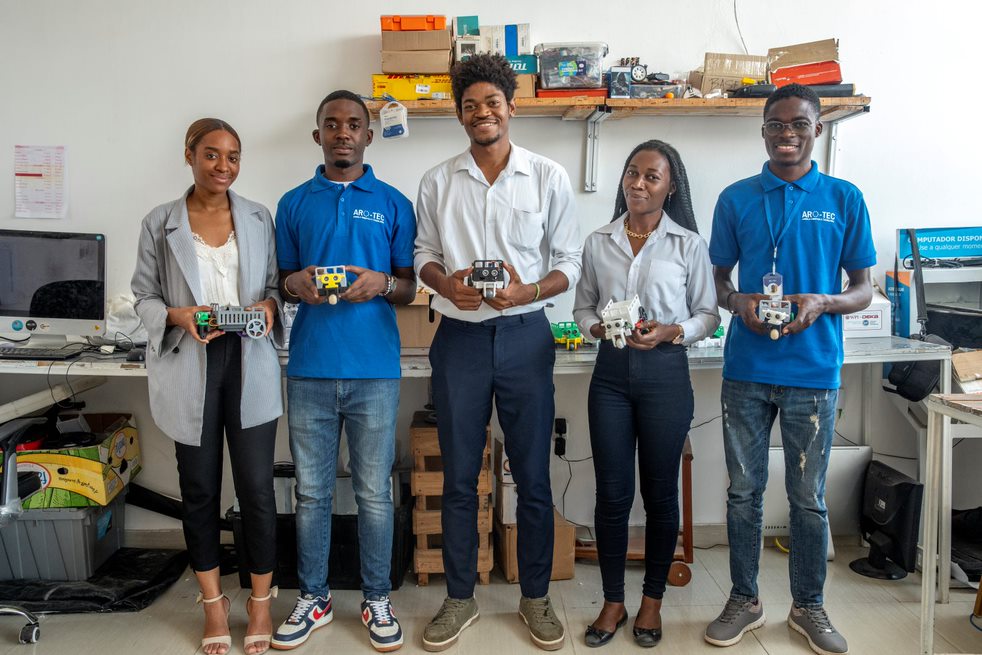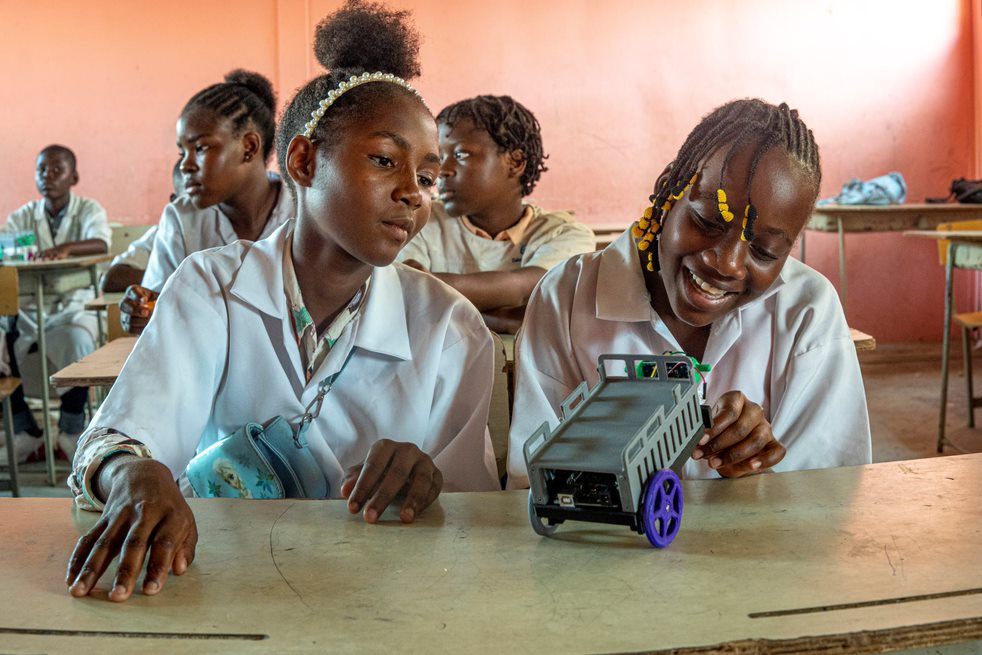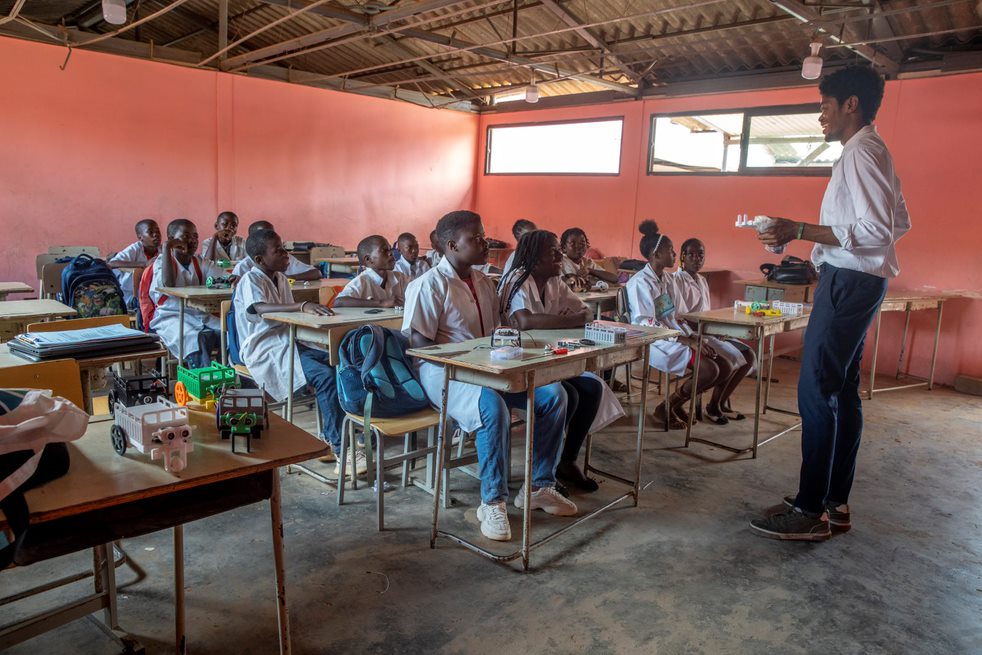Angolan electronics engineer Cristovão Cacombe created Arobot to address the lack of robotics labs in his country’s schools. In Africa, the technology sector is growing rapidly but faces a skills gap. There is a need for accessible training tools and programmes to help students and professionals develop necessary skills in electronics engineering, programming and software development.
Arobot’s two motors are connected to a microcontroller which communicates via Bluetooth with an open-source electronic prototyping platform, enabling users to create and programme interactive electronic objects.
The robot is battery powered with its body and wheels made from recycled 3D-printed plastic.
Arobot has ultrasonic and ultraviolet sensors which allow actions to be programmed through artificial intelligence-informed programming. A Bluetooth sensor connects it to a laptop so the robot’s actions can be coded and executed. It can also be connected to a mobile phone.
Arobot comes unassembled and needs to be built from 3D-printed parts. It is usually assembled by groups of four children, which encourages collaboration and teamwork.
With the help of an instruction manual and a series of YouTube videos to confirm the build is correct, users then code simple robot tasks in C++, Scratch or other programming languages.
The robot can be programmed to use its sensors to move in all directions, avoid obstacles or follow a specific path.
He and his team also operate eight technical education centres where Arobot lessons are offered. The online platform provides robotics, STEM and AI courses which enable Arobot to be programmed for tasks such as racing against other robots.
Since launching his company, Arotec, Cacombe and his team have developed a range of hardware learning kits, including the Aroe Petrolsim oil rig simulator, as well as online programming platforms. Arotec's revenue comes from selling the hardware kits, one-time payments or subscriptions for the training programmes, and licensing the software platforms. The company also provides practical courses for corporate and government clients, covering topics such as robotics and mechatronics.
In 2023-24, Arotec's courses and kits were used by over 5,000 students across more than 20 schools, and empowered teachers to educate their pupils. The team also sold 800 kits and simulators.

“Arobot provides practical application of the theory children are already learning. Our robot has an African identity, taking the form of a vehicle all children in Angola can recognise. They are accessing valuable lab-grade experience, while having the best time.”
Cristovão Cacombe




